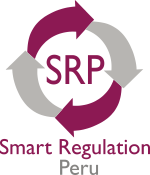Formalities or procedures are one of the activities or functions that citizens recognize as an activity of public institutions and by which they judge the government efficiency.
Formalities are conceived as information obligations that government imposes to citizens, companies, and social organizations (regulated) and represent administrative burdens because it refers to the collection and delivery of documents (red tape) applications (permits, licenses, subsidies, etc.), reports, filling of forms, notifications, payments, among others.
To do these activities, individuals should spend time to collect, generate and deliver the information required by government offices; this, with the aim to obtain a benefit or service, comply with an obligation established in regulations, or to obtain any resolution.
The idea behind administrative procedures (administrative burdens - formalities) is that private individuals would not normally generate and/or deliver this information to the government unless they are obligated by regulation. This means that individuals spent a certain amount of resources (human, financial and material) to comply with the formalities imposed by the government, instead of using them in other higher value-added activities in their business or, in general, in some specific activities, such as: innovation, training, production processes, among others.
On the other hand, procedures or formalities represent a valuable source of information for governments, so that they can decide the beneficiaries of programs, to verify the compliance of regulation, to obtain records of regulated activities, and to develop public policies or improve the existing ones. Therefore, we can say that the government could naturally tend to establish procedures when it requires information from private and regulated individuals, and has the power to do so.
In this sense, it would be not possible or efficient for government to eliminate all formalities (information obligations) since it requires that information to do its work and to take the best decisions for society. However, government offices could conduct exercises of analysis to identify which information is unnecessary, that means, useless, repetitive or obsolete; also, it would be advisable to identify, in these exercises, the information obligations that could be excessively expensive to generate by individuals and to rethink whether it is really necessary for the purposes of government or if the government has another way to access of it, without imposing costs for individuals.
Thus, we can say that the unnecessary formalities or requirements generate inefficiencies in a country economy. Therefore, it is very important that governments carry out regulatory improvement exercises, such as the Administrative Simplification Programs.Over the last two decades, governments around the world have made great efforts to implement Administrative Simplification Programs in which they have been reviewed their regulatory stock in order to remove unnecessary barriers or administrative burdens, and facilitate the compliance of formalities incorporating the use of information technologies, reorganizing their processes through one-stop-shops, reducing their response times, extending the validity of licenses or permits, among other improvement actions.
Fulfilling of formalities should not be an impossible mission for citizens or companies, conversely, if the government requires the information to take better decisions, then government should make easier for individuals the elaboration, presentation and delivery of information (formalities).
The administrative simplification exercises carried out in Europe in recent years have provided great experiences that have been documented and disseminated by the Organization for Economic Co-operation and Development (OECD). In my perspective, the greatest innovation of these exercises has been developed by the Dutch Government, which has been called the Standard Cost Model.
The Standard Cost Model has come to strengthen the administrative simplification programs, since it proposes the quantification and monetization of administrative burdens, that is, it proposes a method to determine how long it takes a person to carry out a formality and how much money it costs.
Bringing administrative burdens into the economic dimension give off a red tape price, which has encouraged government offices to make efforts to minimize administrative burdens, making government-citizenship interaction more efficient and effective.
Administrative simplification is a tool of the Regulatory Improvement Policy, is the best known and the most implemented because it is useful to improve the perception of individuals about their governments.
The adoption of the Standard Cost Model is now mandatory for all those who wish to implement an administrative simplification program, since it will allow them to measure and know the value of the administrative burdens before and after the implementation of simplification activities such as: one-stop-shops, the use of internet, the elimination of unnecessary requirements, among others. With the Standard Cost Model, the policy makers will have clarity of the economic resources that were released with simplification actions. Likewise, these simplification programs must incorporate public consultations to identify in voice of citizens, companies and social organizations, which are the most cumbersome procedures and why, focusing on improvement actions for these procedures.
In conclusion, although we must recognize that formalities impose burdens to individuals, we must also accept that it is not possible to eliminate all the formalities that a government establishes, because it requires updated, timely and truthful information to operate and take decisions. In this sense, governments are forced to carry out continuous exercises of analysis in order to preserve the necessary formalities and eliminate or avoid unnecessary information obligations; to seek cooperation and coordination between government entities and obtain from other sources some of the information required without the need to disturb individuals; to modernize the government offices and make their processes more efficient using the new technologies; and, in general, to simplify and facilitate the interaction of citizens, businesses and social organizations with the government, minimizing not only burdens, but also the discretionality of those who apply the law and the possibility of corruption acts.



